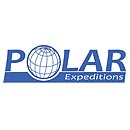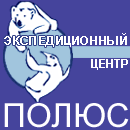|
Historical Reference.
Since 1991 the Adventure Club is involved
in organizing the work of searching and investigation of the
graves of the Russian pioneer explorers. One of the objectives
of this work is restoration by the method of plastic reconstruction
(by a scull) of their lifetime images. The first experience
in this field was the expedition to the Commander Islands
(1991), the result of which was the discovery of the grave
of the Captain-Commander Vitus Bering (1681–1741), the Chief
of the Great North Expedition. Scientists of the Russian Forensic
Centre reconstructed the actual portrait of this outstanding
navigator.
The Great North Expedition (1733–1743),
the official name – the Second Kamchatskaia Expedition, under
the leadership of the Captain-Commander Vitus Bering, compiled
the chart of the Russian territories. They described all north
and east margins of Russia from Arkhangelsk to Okhotsk, enormous
interior spaces of the Eastern Siberia, the Kuril and Aleutian
Islands, discovered routes to Japan and America. The Expedition
collected unique data about the nature and history of Siberia
and the Far East.
This was the largest exploring expedition
in the history of the mankind. As a result of its activities
the domains of Russia extended to the three parts of the world:
Europe, Asia, and America. In the course of the expedition
the Russian ships "St. Peter" and "St. Pavel" under the command
of V.Bering and A.Chirikov for the first time in the Russian
history carried out the transoceanic voyage and reached the
shores of America.
In 1999 the Club organized the
expedition to the north of Yakutia, which achieved outstanding
results: reconstruction of the portraits of Lieutenant Vasily
Pronchishchev, the chief of one of the detachments of the
Great North Expedition, and his wife Tatiana Pronchishchev,
who was the first in history woman – Arctic explorer. Specialists
determined the actual reason of the death of Vasily Pronchishchev:
adipose embolism, caused by an open fracture of the cannon-bone
of the left leg, and not a scurvy, as was thought before.
In July 2001 the Adventure Club organized
a new historical-geographical expedition with the objective
to find and to investigate the place of death of the detachment
of the Great North Expedition under the command of Lieutenant
Peter Lassenius. But all search works did not give any
results.
In 1735 one of the detachments of the Great
North Expedition under the command of the lieutenant Peter
Lassenius, stayed for the winter at the mouth of Khara-Ulakh
River, the north of Yakutiya. The detachment had the task
to chart the coastal line of Russia from the Lena River to
the Strait, separating Asia and America. In accordance with
the historical version all members of the detachment had the
scurvy. 36 people out of 46 died. Their burial place was lost.
The Great North Expedition required employment
of enormous human and material resources. 13 ships built in
Arkhangelsk, Tobolsk, Yakutsk and Okhotsk, supported 7 research
detachments, which had sufficient amount of equipment and
food. The crews of the ships were at full strength.
The number of participants of the main
and subsidiary detachments amounted to around 5000 people.
But for the present we have the reliable portraits
only of three persons: Stepan Krasheninnikov, the first
Russian academician – geographer, Professor Johan Gmelin and
Professor Herard Miller (half-face). There were no portraits
of the other participants of the Bering expedition 1991. The
portraits of the first Russian explorers: navigators, kasaks,
merchants did not exist as there was no secular painting in
Russia before Peter the Great.
Consequently the existing portraits of
the participants of the Second Kamchatskaia expedition are
essentially the first portraits of the Russian explorers.
|










